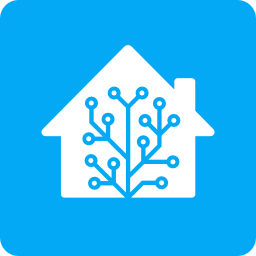Hello! I’m eyeballing an Ecowitt weather station and would like your suggestions as to what to do with it. Are there automations you do with it? Just displaying a weather dashboard? Mostly using it for the inside temp/humidity sensors?
Please help me justify buying it to myself!
I use mine quite a lot. I have a weather dashboard, and the forecasts from my weather station are second to none, way more accurate than any other option. I also use them in a lot of automations. Many of which are here, the python script described there is using a lot of weather data to make decisions about whether to keep the heat lower in the morning or not. Saves me pretty good money on heating.
Nice dashboard!! What weather station do you use?
Weatherflow Tempest. Not cheap but excellent weather station with great integration ro HA.
I was just about to set up a weather station, but then I discovered PWS Monitor app. Opening the app I found there is six weather stations in a two mile radius of my house. Now I just monitor without having to go with the expense. And with that said, If you do get one leave it OPEN so your neighbors can see it through app like these.
I can see in the app that there’s a weather station nearby. Does this mean I can get its data into HA?
Select the nearby station then click “+Save Station”, after that the data from the station should show.
Hey there, I have an Ecowitt system. I use it to tell me when to close the curtains based on sunlight, use it to tell me when to open or close the windows, and I also have some of their soil moisture sensors in my garden to tell me when to water. I plan on expanding that last one to an automatic irrigation system!
The one catch is that you’ll want to lock it down on Ecowitt’s site, otherwise other people can see your sensors.
I’d like to hear more about those moisture sensors if you’d be willing to share
How many do you have? (If multiple) do you space them out around your yard? Do you find it to be accurate enough? Do you have experience with other systems to compare it to?
Sorry for the 20 questions. I’ve lived in a condo my entire adult life but I’m buying a house soon and lawncare scares me lol
Honestly moisture sensors would be nice to have later, but you don’t need to start with that. A smart irrigation timer from companies like Rachio will be just fine for the begining. It adjust the watering schedule based on current weather conditions so you don’t have to make manual changes from season to season.
Sure! I have three, in different spots in different gardens. I do find them to be pretty darn accurate, especially if you calibrate them like the instructions say. I don’t have anything to compare them to, but their data makes pretty graphs in home assistant and their backend.
As someone who moved from condo life into having a significant amount of deck plants, you just need an irrigation system and it doesn’t need to be smart.
I use the b-hyve as a water timer, it’s on my WiFi and tied into home assistant but it’s fully self sufficient on its own. It’s only job is to turn on the water. It is smart enough to not do it when it’s rained recently.
The water runs to some fat black pipe that runs around my deck, with smaller hoses plugged into it that go into the plant pots. In the pots are either drip emitters, or what’s better is an emitter hose that releases water every few inches. This is called drip irrigation and outdoor pots have holes in the bottom, so you can’t really over water. Mine runs for 20 minutes every morning at 6am and everything thrives.
Lawn care you’ll need some sprinklers or something, but before you invest make sure you look up your local regulations for water restrictions. Where I live you can’t water a lawn during peak summer, at all. Drip irrigation is always allowed because it’s very water efficient.
I use the Ecowitt moisture sensors for potted plants. Given their size, I wouldn’t recommend using them for your lawn because you have to be sure to not hit them when mowing.
Automated irrigation systems are reasonably consistent. I moved from my lawnless apartment to a house with a backyard of grass. I left out a few empty containers across the lawn, waited for the first watering cycle, and adjusted the timings based on the distribution.
I also have ecowitt sensors. I ended up using a software defined radio and rtl-sdr to decode all the station and sensors. It’s been working great.
Collecting and comparing environmental data was the whole reason I started homeassistant. I mostly use indoor sensors and compare with national weather service for outdoor, but I like seeing the data. Graphs of indoor/outdoor, next to https://cdn.star.nesdis.noaa.gov/GOES16/ABI/SECTOR/se/GEOCOLOR/600x600.jpg (which updates every 5 minutes) I live in the US Southeast, and the indoor/outdoor comparison, especially dewpoint, lets me know when it’s ok to open windows overnight. i.e.: the overnight temperature usually drops below the A/C set point, but if that’s going to draw in a bunch of humid air, it may feel more comfortable to keep the warmer, drier air. Actual, local outdoor conditions would be even better, because we do get localized summer showers that really raise the humidity in very small areas, and the NWS data comes from an airport 5 miles away.
I’d love to have some motorized windows, or even blinds, for automation. Absent that, there’s nothing super obvious to me to trigger off environmental data.
I love my weather station. The original problem I had was weather data for my area was inaccurate relative to where I lived. Today we hit 107.2F at my house, the weather station over 5 miles away registered 101F. I knew it was hot but I’m given comfort knowing that what I’m feeling is more in line with the weather station is reporting.
One of the features of my Tempest PWS that is a real blessing over the summer in lightning detection. My rescue beagle does not handle thunderstorms well, and the vet recommended some anti-anxiety meds - but they need to be given well before the storm is audible to some very large ears. So, I have a Home Assistant automation that sends alerts for > 5 strikes within 60 miles.
You can also get the Blitzortung integration for Home Assistant, which will let you generate an alert from their cloud data.






